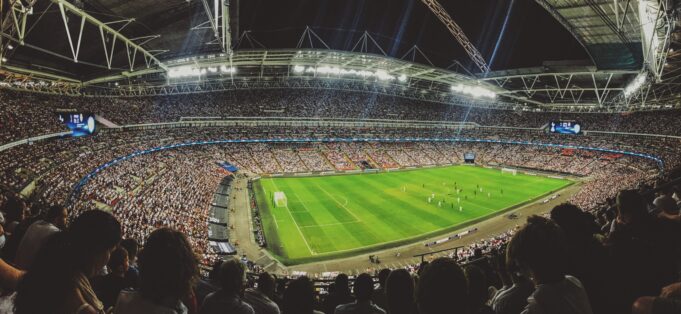Watching professional and amateur sports has always been a popular pastime. In the days before there was electricity, sporting events had to take place during the day to ensure proper lighting. Depending on the weather, this could make it uncomfortable for spectators and players alike. It was also inconvenient for people who wanted to watch the games but had to work during the day.
Harnessing electricity changed the way that sports were played and watched. Thanks to artificial lighting, it became possible to hold games after dark, which was more convenient for many spectators. Since then, stadium owners have found many ways to use electricity to enhance the experience for fans as they watch. However, there is an enormous cost involved.
What Are the Biggest Electricity Uses in a Sports Stadium?
Most of the universal power supply to a sports stadium goes to lighting it. In the beginning, the only concern when it came to lighting a game was making it bright enough so that players could see what they were doing and spectators could follow the action. However, it complicated matters when television broadcasting of sporting events began. Lighting that was sufficient for players and fans was sometimes too dark to show up well on a TV screen. To this day, it remains a challenge for lighting engineers to design uniform lighting coverage for the benefit of those in the stadium and those viewing remotely.
Today, most stadiums use either high-intensity metal halide lamps or light-emitting diode lamps to light their stadiums. Metal halide lamps are the more traditional choice but lose energy in heat and take a long time to reach full intensity. LED lights give off almost no heat, light up to full intensity instantly, and can be less expensive than traditional metal halide lamps.
The amount of heat given off by the lamps is significant partly because another major energy demand in many sports stadiums is air conditioning. This is important for the safety of the players and the comfort of the spectators, especially in particularly warm climates. However, it represents a significant drain of power and may, ironically, contribute to increases in the earth’s average temperature that drive the demand for more air conditioning.
There is also power required to run the concession and souvenir stands, to power high-definition TV screens, and sometimes to extend and retract the stadium roof. As a result, the peak energy consumption of a major stadium can be 750 megawatts, sufficient to power several thousand individual homes.
How Can Sports Stadiums Become More Energy Efficient?
Some sports stadiums have taken strides to become more efficient and find renewable sources of energy. One innovative company in Brazil developed a system in which the kinetic energy of the players actually helps to keep the lights burning on a soccer field, which is utilized by kids in a poor neighborhood in Rio de Janeiro. Plates were installed in the field and covered with artificial grass. When players step on the plates, it causes cogs underneath of them to spin. The energy produced by the spinning motion is then harnessed to generate electricity.
The Brazilian system of using kinetic energy to light the stadium is still in its early stages. It is unclear whether it would be sufficient to meet the demands of the largest professional stadiums. Nevertheless, there are facilities that have taken pains to reduce their substantial carbon footprint by making use of other renewable sources of energy, such as wind and solar power. A stadium in Philadelphia actually produces four times the power it uses during a regular season with 14 wind turbines and an impressive 11,000 solar panels. It has been recognized as one of the greenest stadiums in the world by the Department of Energy, one of only five stadiums in the United States so honored.
Stadiums’ embrace of renewable sources of energy not only benefits the earth. All that energy comes at a price. A single megawatt/hour of energy costs $30, so powering a single stadium runs into thousands of dollars. Therefore, sports facility owners stand to save a sizable bundle by going green.




